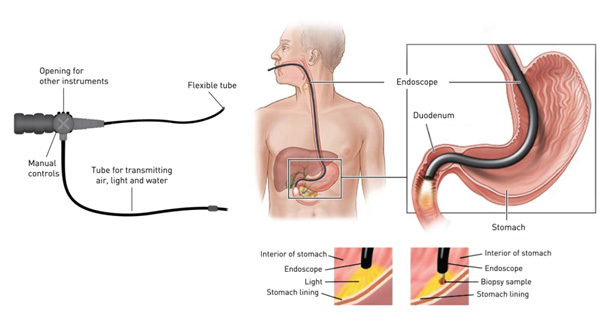

Upper GI endoscopy is a procedure that uses a flexible endoscope to visualize the upper GI tract. The upper GI tract includes the oesophagus, stomach, and duodenum - the first part of the small intestine.
During the procedure, patients lie on their back or side on an examination table. An endoscope is carefully fed down the oesophagus and into the stomach and duodenum. A small camera mounted on the endoscope transmits a video image to a video monitor, allowing close examination of the intestinal lining. Air is pumped through the endoscope to inflate the stomach and duodenum, making them easier to see. Special tools that slide through the endoscope allow the doctor to perform biopsies, stop bleeding, and remove abnormal growths.
